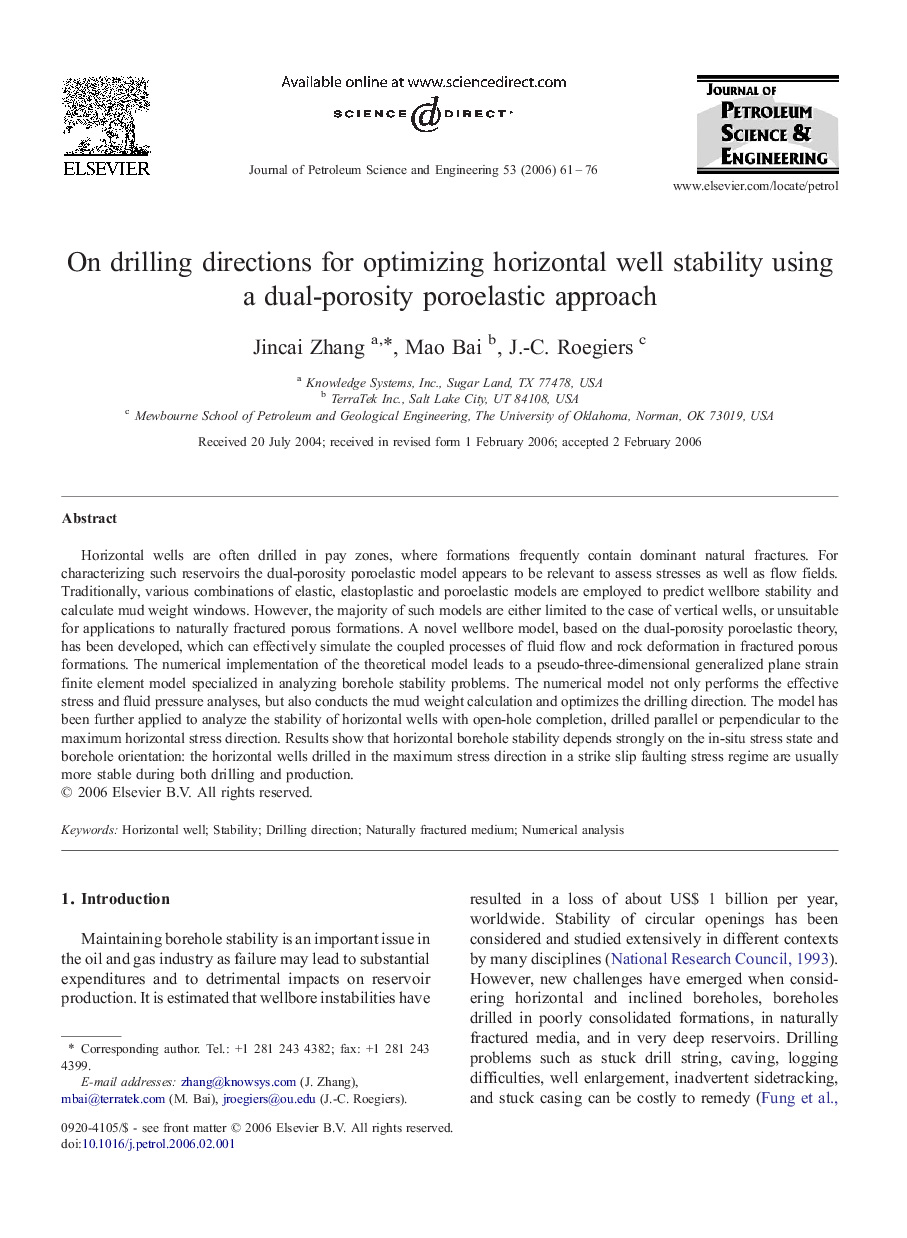| Article ID | Journal | Published Year | Pages | File Type |
|---|---|---|---|---|
| 1756393 | Journal of Petroleum Science and Engineering | 2006 | 16 Pages |
Horizontal wells are often drilled in pay zones, where formations frequently contain dominant natural fractures. For characterizing such reservoirs the dual-porosity poroelastic model appears to be relevant to assess stresses as well as flow fields. Traditionally, various combinations of elastic, elastoplastic and poroelastic models are employed to predict wellbore stability and calculate mud weight windows. However, the majority of such models are either limited to the case of vertical wells, or unsuitable for applications to naturally fractured porous formations. A novel wellbore model, based on the dual-porosity poroelastic theory, has been developed, which can effectively simulate the coupled processes of fluid flow and rock deformation in fractured porous formations. The numerical implementation of the theoretical model leads to a pseudo-three-dimensional generalized plane strain finite element model specialized in analyzing borehole stability problems. The numerical model not only performs the effective stress and fluid pressure analyses, but also conducts the mud weight calculation and optimizes the drilling direction. The model has been further applied to analyze the stability of horizontal wells with open-hole completion, drilled parallel or perpendicular to the maximum horizontal stress direction. Results show that horizontal borehole stability depends strongly on the in-situ stress state and borehole orientation: the horizontal wells drilled in the maximum stress direction in a strike slip faulting stress regime are usually more stable during both drilling and production.
